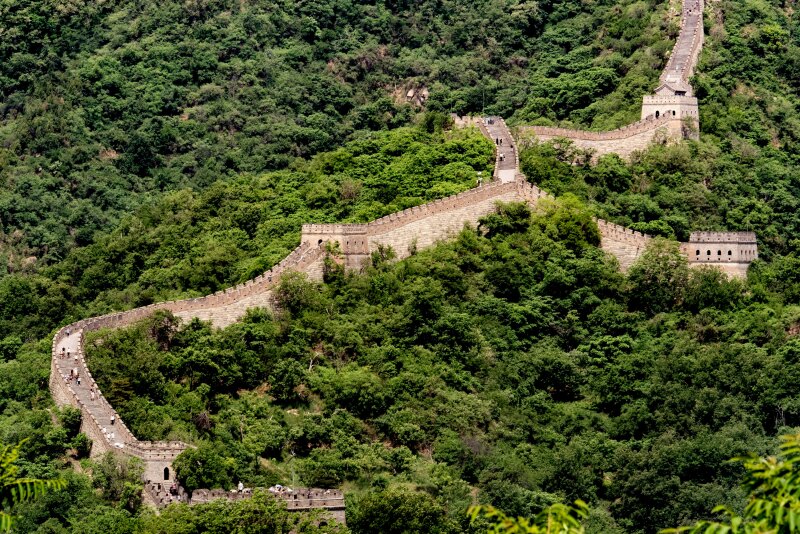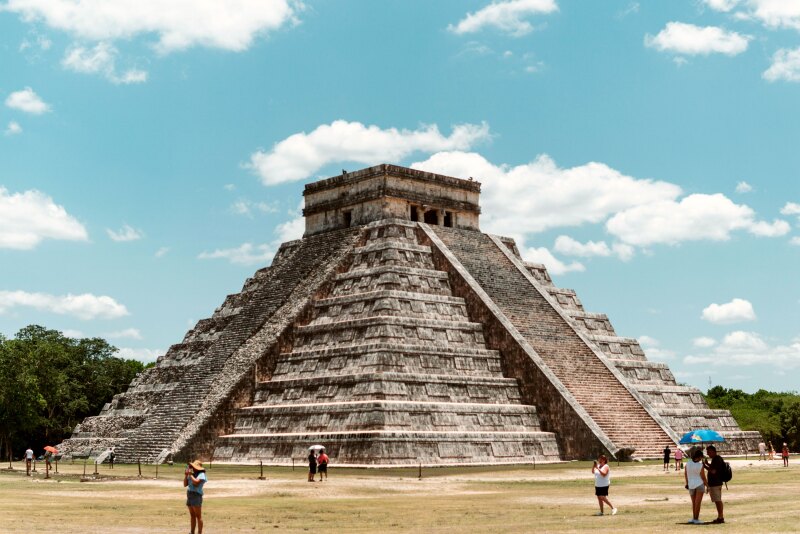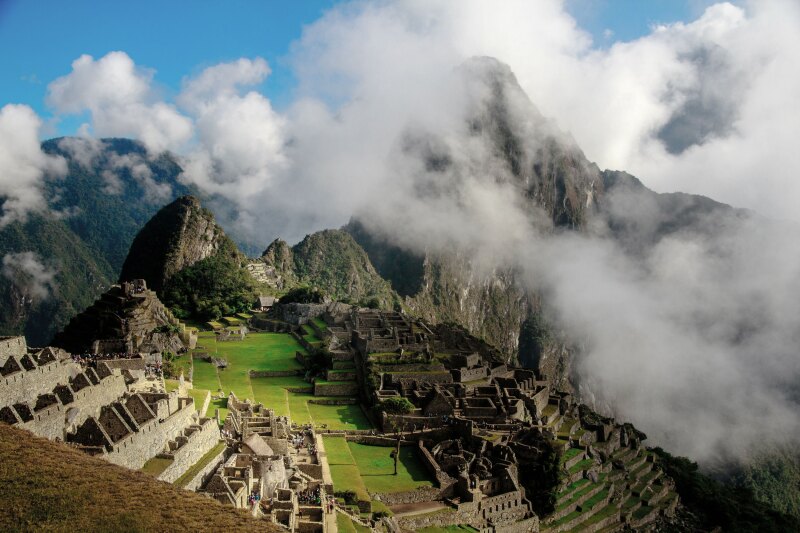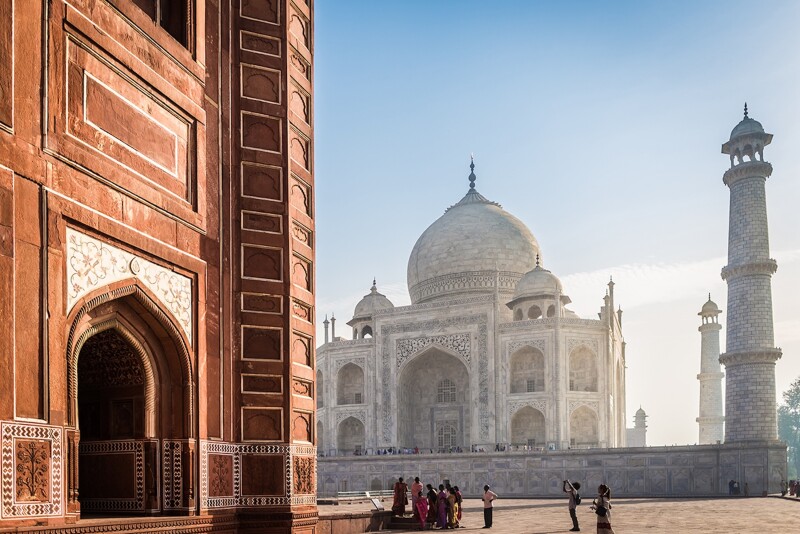The New Wonders of the World wouldn’t have been possible without what may be the best marketing campaign the travel industry has ever seen, for the original Seven Wonders of the the World: the Great Pyramid of Giza, the Colossus of Rhodes, the Lighthouse of Alexandria, the Mausoleum at Halicarnassus, the Temple of Artemis, the Statue of Zeus at Olympia, and the (possibly fictional) Hanging Gardens of Babylon. The original set sources input from Hellenic travelers. The 7 New Wonders took a different approach.
In 2000, Swiss-based New7Wonders Foundation released a poll to update the old list. More than 100 million votes came in from all over the world, eventually crowning the Taj Mahal, Colosseum, Great Wall of China, Cristo the Redeemer, Petra, Machu Picchu, and Chichén Itzá as the winners in 2007. (Meanwhile, Stonehenge, the Acropolis, Angkor Wat, and Alhambra are a few of the finalists that didn’t make the cut.)
The organization (understandably) received criticism for its methods. UNESCO even made a formal announcement that it wasn’t involved with the campaign “in order to avoid any damaging confusion.” But the label stuck. Now these places drive such large visitor numbers that one may wonder if visiting them is still worth it in the age of overtourism. It is.
For many, the Wonders of the World represent more than the specific destinations; instead, they symbolize a larger-than-life idea of visiting faraway places. When I was a high schooler set on traversing the whole world, I had a vision of seeing all existing Wonders by the time I hit 25. I’m 27, and I’ve only seen three, but the wonderful, weird, and majestic places I have seen are in part thanks to an ambitious dream that got me out the door.
As Afar contributor Carey Baraka writes about the value of these types of places eloquently in his piece about bucket lists: “While there is undeniably still space for small, local travel, we can’t write off travel experiences that are about the superlative, the pinnacle, the peak. And when most of your life is lived in a valley, after all, such experiences are thrown into relief.”
So if you’re intent on seeing the Wonders of the World, more power to you. Try to be thoughtful when you visit, and support local communities when you can.
Here are a few tips from experts (including some on Afar’s Travel Advisory Council) for experiencing the seven New Wonders of the World and the last remaining original Wonder—while minimizing the chaos of the crowds.
1. Great Pyramid of Giza
Egypt
The Great Pyramid of Giza is the only one of the Seven Wonders of the Ancient World still in existence, getting honorary status in the new list. The pyramid was built around 2,600 B.C.—impressively, well before protractors were invented. A whopping 14.7 million tourists visited the Great Pyramids complex in 2023. Despite those crowds, former Afar senior editor Lyndsey Matthews still deems it a tourist attraction worth visiting, although you may want to skip paying extra to go inside the Great Pyramid if you’re prone to claustrophobia.
Kate Doty, tour operator Geographic Expeditions’ managing director of premier access, recommends arranging a private viewing of the Great Pyramids or the outside of the Great Sphinx’s paws, which would also give you an uncrowded view of the pyramids. From Doty’s experience booking clients with Geographic Expeditions, those who opt for such excursions need advance requests, as you’ll need confirmation through the Egyptian Antiquities Authority.

Genghis Khan breached the Great Wall of China in the 13th century.
Photo by Jamie Street/Unsplash
2. Great Wall of China
China
The 13,171-mile Great Wall of China is so expansive, there’s even a myth that you can see it from space. Built in 220 B.C. as a defense against outside invaders, it runs through the northern part of central China. Nowadays, more than 10 million people come and marvel at the fortification.
Naturally, most travelers don’t come to walk the whole Great Wall. Instead they usually choose a section to visit, each with various levels of hiking difficulty and accessibility. Several parts are favored by tourists, such as Badaling, which is 40 miles from Beijing. But if you want to get away from the crowds, Doty suggests going to more remote sections that are still well preserved, such as Jinshanling in northeast China. The section is a two-hour drive (around 100 miles) from Beijing, making it a crowd-free day trip from the capital.

The path after the Treasury is where you’ll find fewer crowds.
Photo by Michelle Heimerman
3. Petra
Jordan
Petra, in southwest Jordan, was settled by the Nabataeans around 400 B.C. The approximately 65,000-acre site has tombs and a massive theater, but it’s most famous for the Treasury, a facade carved into the rock to be a mausoleum. (The name comes from the area’s inhabitants in the 19th century, who believed there was treasure inside.)
The ancient city draws about 1 million travelers a year. If you want to avoid the crowds, Doty recommends venturing farther from the iconic structure: “If you are physically able, you may walk the steps up to the monastery, and there will be even fewer people.” Cari Gray, CEO and owner of private jet travel company Gray and Co., suggests ending (or starting) a hike from the nearby archaeological site Little Petra. But to do this, you need to arrange a guide and transportation at the end and starting points.

Standing at 157 feet tall, the Colosseum is hard to miss.
Photo by Viacheslav Lopatin/Shutterstock
4. Colosseum
Italy
In the heart of Rome is the Colosseum, the largest standing amphitheater in the world, at 620 feet in length and 512 feet in width. It was completed in 80 A.D. and could hold anywhere from 50,000 to 80,000 people as they spectated entertainment from gladiator battles to dramas. Though gladiators are no longer fighting to the death in the arena, the crowds still gather: About 12 million people visited in 2023, making it Italy’s most famous attraction.
With undiscovered neighborhoods around Rome, there’s a solid case for avoiding the site altogether, but there are a few ways to visit with fewer crowds. Elisa Valeria Bove, CEO of private tour company Roma Experience, says the key is to visit right when it opens, at 8:30 a.m., or right before it closes (3:15 p.m. in winter and 6:15 p.m. in summer). Alternatively, travelers can get another look at the landmark with an underground tour, which takes up to 25 people at a time down into its tunnels.

The ancient city of Chichén Itzá takes up four square miles.
Photo by Alex Ramon/Unsplash
5. Chichén Itzá
Mexico
Chichén Itzá is a Maya city in the Yucatan that was built around 700 to 900 C.E. Like Egypt’s Great Pyramid creators, the ancient Mayans were really good with math: The city’s Kukulcán pyramid, named after a snakelike deity, served as a huge calendar. The spring and fall equinoxes are particularly popular times to visit, as on these days the sun casts a shadow on the pyramid in a way that outlines the figure of the god’s serpent-shaped body. It’s a cool phenomenon, but may not be worth it considering that the equinoxes occur when many of the Wonder’s 2 million annual visitors choose to visit.
To avoid the crowds, try to get there right when the site opens, before the hordes of travelers come in. With the intensity of the sun and limited shade, your body will thank you. Still, you may find yourself rubbing shoulders with some tour groups on a guided tour, but don’t fret; there are plenty of other ancient pyramids worth exploring in Mexico.

Machu Picchu means “Old Mountain” in Quechua.
Photo by Scott Umstattd/Unsplash
6. Machu Picchu
Peru
Machu Picchu is a 15th-century Inca citadel located nearly 8,000 feet above sea level. For many of its 950,000 or so annual visitors, the trip entails a car or train ride to a gateway town like Aguas Calientes, followed by a bus to the sacred site. As a good rule of thumb, Afar deputy editor Michelle Baran recommends getting there early or late in the day to explore in relative solitude. But to avoid the literal bus load of tourists obscuring your view, travel advisor Doty suggests lacing up your hiking shoes and taking a trek, such as the Choquequirao Trek or the Lares Trek, to get some grand vistas of the sanctuary.
Peru’s Ministry of Culture offers three circuits for viewing all of the sights at Machu Picchu in an effort to spread out the crowds. On a 2024 visit to Machu Picchu, Afar deputy editor Tim Chester completed a lower circuit and now recommends it: “You still pass many of the main sights, but you’re not part of a herd.”

Mughal emperor Shah Jahan commissioned the Taj Mahal in Agra in 1631 to honor his late wife Mumtaz Mahal.
Photo by Niti Kantarote/Shutterstock
7. Taj Mahal
India
There are grand romantic gestures, and then there’s the Taj Mahal. In 1631, Mughal emperor Shah Jahan commissioned this landmark in the name of love; he wanted a proper mausoleum to honor his late wife. The 42-acre complex draws 7 to 8 million visitors every year; if you’re debating whether to catch it at sunrise or sunset, Doty says the former seems less crowded.
For a fantastic viewpoint, Gray says the Oberoi Hotel is great when the skies are clear. The Nagla Devjit neighborhood, on the other side of the Yamuna River, is another recommended spot, with viewpoints such as the Mehta Bagh gardens.

The head and hands of Rio de Janeiro’s Christ the Redeemer statue were sculpted in France.
Photo by Marchello74/Shutterstock
8. Christ the Redeemer
Brazil
Looming over Rio de Janeiro are the outstretched arms of Christ the Redeemer, a concrete statue of Jesus Christ. The Catholic symbol stands at 98 feet high and spans a whopping 92 feet horizontally from fingertip to fingertip. The concrete work took five years to build and was finished in 1931. The statue is the crowning piece of Corcovado Mountain, and about 2 million people come every year to visit the work.
There are several ways to see Christ the Redeemer, including via train, van tour, and hike. If you want to time your visit right, Afar contributor and Rio de Janeiro resident Joel Balsam recommends visiting right when it opens in the morning. Or save the sweat and consider going by helicopter (like the ones offered by Kensington Tours), which Gray recommends if the skies are clear.











